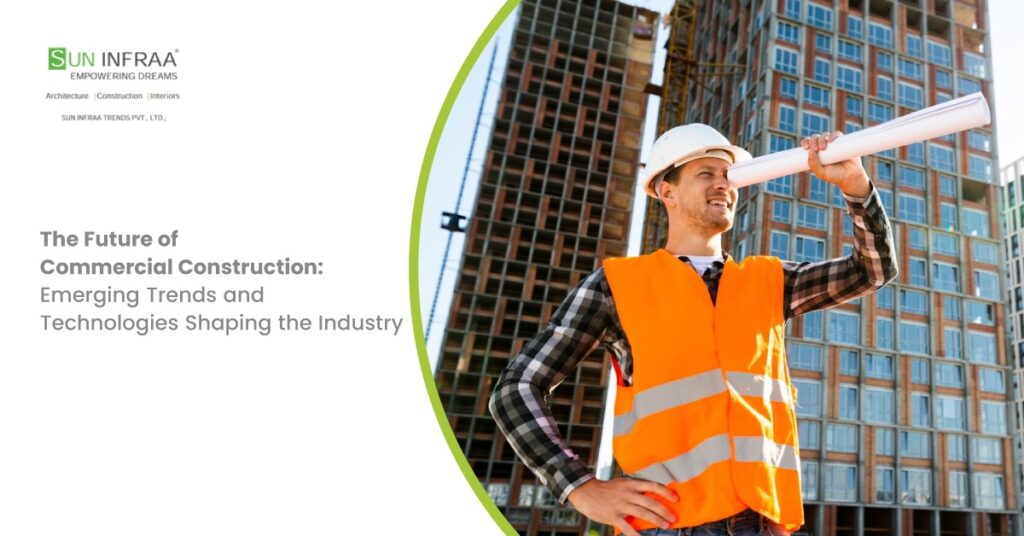The Future of Commercial Construction: Emerging Trends and Technologies Shaping the Industry
The commercial construction industry is on the cusp of a transformative era, driven by rapid advancements in technology and changing societal demands. From eco-conscious building practices to groundbreaking innovations like artificial intelligence and modular construction, the landscape of commercial construction is evolving at an unprecedented pace. For architects, builders, and stakeholders, understanding these trends is key to staying competitive and delivering value in an ever-changing environment.
1. Green Building Practices and Sustainability
As global concerns about climate change grow, sustainability has become a cornerstone of modern construction.
- Energy-Efficient Designs: Advanced insulation, energy-efficient windows, and HVAC systems are now standard in commercial projects.
- Renewable Energy Integration: Solar panels, wind turbines, and geothermal systems are increasingly being incorporated into building designs.
- Sustainable Materials: Builders are opting for eco-friendly materials such as bamboo, recycled steel, and low-carbon concrete to minimize environmental impact.
- Green Certifications: Certifications like LEED (Leadership in Energy and Environmental Design) ensure that buildings meet stringent sustainability criteria, attracting environmentally conscious clients.
2. The Rise of Modular Construction
Modular construction, also known as prefabrication, is revolutionizing how commercial projects are built.
- Time Efficiency: Modules are pre-assembled in controlled environments, reducing construction timelines by up to 50%.
- Cost Savings: Prefabrication minimizes material wastage and labor costs.
- Design Flexibility: Modular components can be customized to suit a variety of commercial needs, from office buildings to retail spaces.
- Scalability: This approach is particularly effective for projects requiring rapid expansion or replication.
3. Smart Building Technology
Smart buildings equipped with advanced IoT (Internet of Things) systems are becoming a standard in commercial construction.
- Automation: Smart lighting, HVAC systems, and security features enhance operational efficiency.
- Energy Monitoring: IoT devices provide real-time data on energy usage, allowing for more effective management and cost reduction.
- Tenant Experience: Features like app-based access control and customizable workspaces cater to modern business needs.
4. Focus on Health and Wellness
The global pandemic has redefined the importance of health and wellness in commercial spaces.
- Biophilic Design: Incorporating natural elements such as plants, water features, and sunlight improves occupants’ mental well-being and productivity.
- Improved Ventilation: Advanced air filtration systems ensure cleaner indoor air quality, reducing the risk of airborne diseases.
- Flexible Workspaces: Designs now emphasize open areas, multipurpose zones, and touch-free technologies to adapt to changing workplace dynamics.
5. Data-Driven Decision Making
The use of big data analytics is becoming a game-changer in commercial construction.
- Predictive Analytics: Anticipating project risks, weather conditions, and material shortages helps minimize delays and cost overruns.
- Performance Metrics: Tracking key performance indicators (KPIs) ensures projects stay on budget and schedule.
- Customer Insights: Data-driven design aligns projects with client needs and market trends.
Conclusion
The future of commercial construction is dynamic, innovative, and full of possibilities. As the industry embraces cutting-edge technologies and sustainable practices, the potential for creating smarter, more efficient, and environmentally friendly spaces has never been greater. For businesses, these trends offer the opportunity to invest in infrastructure that aligns with modern values and demands.
Are you ready to be part of this transformation? Whether you’re a builder, investor, or stakeholder, staying ahead of these trends will ensure you remain at the forefront of the industry. Let the innovations of today shape the commercial spaces of tomorrow!



